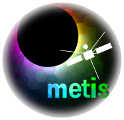Speaker
Description
Throughout the initial three years of the operative mission, METIS coronagraph carried out numerous scientific observations, including some focused on comets. Among the observed cometary targets, there are periodic comets, like 2P/Encke, sunskirters, such as 96P/Machholz, some sungrazers, and even a long-period comet, the C/2021 A1 (Leonard), having an orbital period of approximately 80,000 years. Although many of these observations, especially of periodic comets, were specifically planned, some comets were also identified a posteriori on images collected for solar corona studies.
The ability of METIS to perform simultaneous imaging in a narrow UV band around HI Ly-alpha and in the visible wavelength range can be highly impactful in cometary studies. UV images enable the study of neutral hydrogen coma morphology and the estimation of the water outgassing rate from the comet nucleus. Conversely, visible polarization images allow the derivation of comet parameters correlated with the physical properties (distribution, density, size, ...) of the dust grains in the coma.
In this work, a summary of the activities and main results obtained so far is presented, highlighting some original results obtained from METIS comet observations and sharing some valuable “lessons learned" from these three years of activity.

